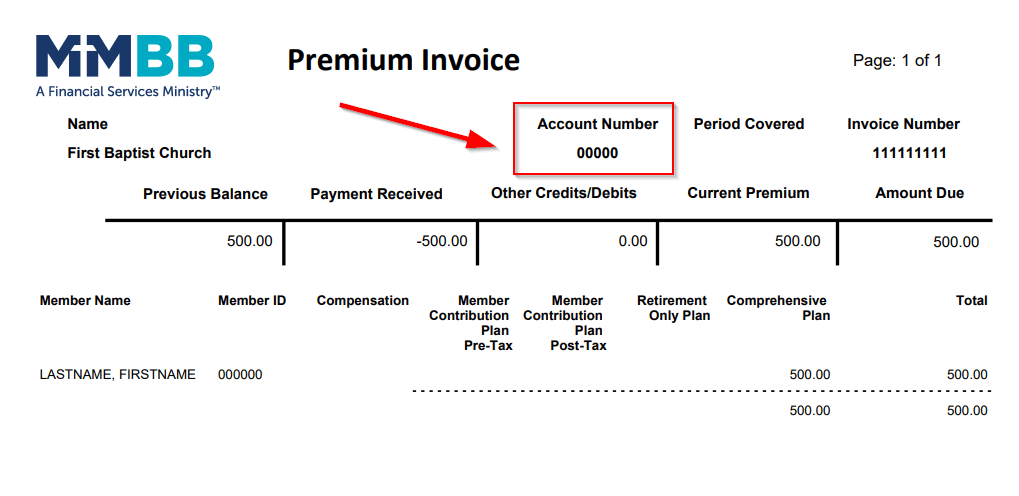The Markets (as of market close May 30, 2025)
May proved to be one of the best months for stocks in quite some time. During May, equities ebbed and flowed in response to uncertainty over U.S. trade policy and the impact of tariffs. May got off to a good start on the heels of strong corporate earnings data and a solid jobs report. The month brought some progress in the U.S.-China trade war, with an agreement for a 90-day reduction in tariffs while the parties continued talks aimed at a trade resolution. However, at the end of the month, President Trump accused China of breaching their recent trade deal. Middle East investment deals also helped push tech shares higher. The S&P 500 and the NASDAQ had their best months since 2023. Nine of the 11 market sectors ended May with gains, led by information technology, communication services, and consumer discretionary. Health care and energy closed in the red.
The latest inflation data was encouraging, however, it did not reflect the potential impact of global reciprocal tariffs, nor has it reached the Federal Reserve's 2.0% inflation objective. Both the personal consumption expenditures (PCE) price index and the Consumer Price Index declined over the 12 months ended in April, while core prices (excluding food and energy prices) for both indexes remained steady. In light of the potential impact of tariffs, it is likely that the Federal Reserve will maintain a cautious approach as it continues to assess the balance of risks to the economy.
Growth of the U.S. economy was muted in March. The gross domestic product (GDP) fell 0.2% in the first quarter following a 2.4% increase in the fourth quarter (see below). The widening of the trade deficit has had a substantial impact on economic growth in the first quarter. However, consumer spending rose 1.8%, the weakest increase since mid-2023. GDP's annual growth rate slipped 0.4 percentage point to 2.1% for the 12 months ended in March.
Job growth exceeded expectations in April. Wages rose 3.8% over the past 12 months ended in April. The number of job openings fell by 288,000 in March to 7.2 million, which was the lowest total in six months and well below expectations. However, this data does not reflect the layoffs and cuts sanctioned by the Trump administration. The latest unemployment data showed total claims paid through mid-May increased by 121,000 from a year earlier (see below).
According to FactSet, during the first quarter of 2025, the health care sector reported the highest earnings growth of the 11 market sectors. Of the companies of the S&P 500, 68 firms reported negative earnings per share (EPS), above the five-year average of 57. However, 78% of S&P 500 companies exceeded EPS estimates. Overall, the S&P 500 reported earnings growth of 12.9%, the second straight quarter of double-digit growth. Nevertheless, tariffs and their potential impact on international trade have concerned companies. For instance, 381 companies indicated uncertainty with respect to future earnings, well above the five-year average of 224, while 121 companies cited the term "recession" during their earnings calls for the first quarter, which is above the five-year average of 79.
The real estate market had mixed results in April, with sales of existing homes falling, while new home sales rose. Mortgage rates remained elevated. According to Freddie Mac, the 30-year fixed-rate mortgage averaged 6.81% as of May 15. That's up from 6.76% one week before but down from 7.02% one year ago. Over the last few months, rates for 30-year fixed mortgages have remained stable and have fluctuated less than 20 basis points over that time.
Industrial production was unchanged in April but rose over the last 12 months. Manufacturing output, utilities, and mining each increased since April 2024. Purchasing managers reported manufacturing was unchanged in April, signaling only a slight increase in activity. Activity in the services sector slowed in April.
Ten-year Treasury yields closed the month higher as traders assessed developments in the trade war and government spending cuts. The two-year note closed May at about 3.9%, down 30 basis points from a month earlier. The dollar index fell for the fifth straight month, its longest losing streak in five years. Gold prices rose in May, marking their fifth straight monthly gain. Crude oil prices increased for the month, although trade tensions and supply concerns pressured prices for much of May. The retail price of regular gasoline was $3.160 per gallon on May 26, $0.027 below the price a month earlier and $0.417 lower than the price a year ago.
MARKET SUMMARY
| MARKET/INDEX |
2024 CLOSE |
PRIOR MONTH |
AS OF 5/30 |
MONTHLY CHANGE |
YTD CHANGE |
| DJIA |
42,544.22 |
40,669.36 |
42,270.07 |
3.94% |
-0.64% |
| NASDAQ |
19,310.79 |
17,446.34 |
19,113.77 |
9.56% |
-1.02 |
| S&P 500 |
5,881.63 |
5,569.06 |
5,911.69 |
6.15% |
0.51% |
| RUSSELL 2000 |
2,230.16 |
1,964.12 |
2,066.29 |
5.20% |
-7.35% |
| GLOBAL DOW |
4,863.01 |
5,089.85 |
5,236.27 |
4.65% |
9.53% |
| FED. FUNDS |
4.25%-4.50% |
4.25%-4.50% |
4.25%-4.50% |
0 bps |
0 bps |
| 10-YEAR TREASURIES |
4.57% |
4.17% |
4.40% |
23 bps |
-17 bps |
| US DOLLAR-DXY |
108.44 |
99.69 |
99.43 |
-0.26% |
-8.31% |
| CRUDE OIL-CL=F |
$71.76 |
$58.32 |
$60.81 |
4.27% |
-15.26% |
| GOLD-GC=F |
$2,638.50 |
$3,303.50 |
$3,314.60 |
0.34% |
25.62% |
Chart reflects price changes, not total return. Because it does not include dividends or splits, it should not be used to benchmark performance of specific investments.
Latest Economic Reports
- Employment: Job growth exceeded expectations in April, with the addition of 177,000 new jobs. The April total was roughly in line with the average monthly gain of 152,000. Employment was revised down by a combined 58,000 for February and March. In April, the unemployment rate was unchanged at 4.2%. The number of unemployed persons changed little at 7.2 million in April. The number of long-term unemployed (those jobless for 27 weeks or more) rose by 179,000 to 1.7 million. These individuals accounted for 23.5% of all unemployed persons. The labor force participation rate in April was 62.6%, up 0.1 percentage point from the previous month. The employment-population ratio also increased 0.1 percentage point to 60.0%. Average hourly earnings increased by $0.06, or 0.2%, to $36.06 in April. Over the last 12 months, average hourly earnings rose by 3.8%. The average workweek was unchanged at 34.3 hours.
- There were 240,000 initial claims for unemployment insurance for the week ended May 24, 2025. During the same period, the total number of workers receiving unemployment insurance was 1,919,000. A year ago, there were 221,000 initial claims, while the total number of workers receiving unemployment insurance was 1,798,000.
- FOMC/interest rates: As expected, the Federal Open Market Committee held the federal funds target rate range at 4.25%-4.50% following its meeting in May. While the Committee indicated that current economic activity remained at a solid pace, the FOMC highlighted increased uncertainty about the economic outlook and noted increased risks to both sides of its dual mandate of maximum employment and inflation at the rate of 2.0%.
-
GDP/budget: The economy, as measured by gross domestic product, decelerated at an annualized rate of 0.2% in the first quarter of 2025 following an increase of 2.4% in the fourth quarter of 2024. Compared to the fourth quarter, the decrease in GDP in the first quarter primarily reflected an increase in imports, which are a subtraction in the calculation of GDP, a decrease in government spending, and a deceleration in consumer spending. These movements were partly offset by increases in investment and exports. Consumer spending, as measured by the personal consumption expenditures index, rose 1.2% in the first quarter, compared to a 4.0% rise in the fourth quarter. Spending on services rose 1.7% in the first quarter, compared with a 3.0% increase in the fourth quarter. Consumer spending on goods ticked up 0.1% in the first quarter (6.2% in the fourth quarter). Fixed investment increased 7.8% in the first quarter after decreasing 1.1% in the fourth quarter. Nonresidential (business) fixed investment rose 10.3% in the first quarter after falling 3.0% in the previous quarter. Residential fixed investment decreased 0.6% in the first quarter following a 5.5% increase in the fourth quarter. Exports advanced 2.4% in the first quarter, compared with a 0.2% decline in the previous quarter. Imports vaulted 42.6% in the first quarter after ticking down 1.9% in the fourth quarter.
- April saw the federal budget register a surplus of $258.4 billion, slightly ahead of expectations and well above the surplus of $209.5 billion in April 2024. April receipts were $850.2 billion versus $776.2 billion a year ago. April outlays were $591.8 billion versus $566.7 billion a year ago. The deficit for the first seven months of fiscal year 2025, at $1,049 billion, is well above the $855.2 billion deficit over the first seven months of the previous fiscal year. Through the first seven months of fiscal year 2025, individual income tax receipts added up to $1,681 billion, while outlays for Social Security totaled $907.0 billion.
- Inflation/consumer spending: According to the latest Personal Income and Outlays report, personal income and disposable personal income each rose 0.8% in April after both increased 0.7% in March. Consumer spending increased 0.2% in April after increasing 0.7% the previous month. In April, the PCE price index and the PCE price index less food and energy (core prices) each ticked up 0.1% for the month. The PCE price index rose 2.1% since April 2024, while core prices increased 2.5% over the same period. In April, prices for both goods and services inched up 0.1%. Food prices decreased 0.3%, while energy prices rose 0.5%.
-
The Consumer Price Index rose 0.2% in April after declining 0.1% in March. Over the 12 months ended in April, the CPI rose 2.3%, 0.1 percentage point below the rate for the 12 months ended in March. Core prices (excluding food and energy) inched up 0.2% last month and 2.8% since April 2024. Prices for shelter rose 0.3% in April, accounting for more than half of the total CPI monthly increase. Food prices decreased 0.1% last month after rising 0.4% in March. Energy prices rose 0.7% in April, despite a 0.1% decline in gasoline prices. Over the last 12 months ended in April, food prices increased 2.8%, energy prices declined 3.7%, and shelter prices rose 4.0%.
-
Prices at the wholesale level declined 0.5% in April following a revised flat reading in March, according to the Producer Price Index. Producer prices increased 2.4% for the 12 months ended in April after rising 2.7% for the 12-month period ended in March. Excluding food and energy, producer prices fell 0.4% in April but increased 3.1% for the year. In April, prices for goods were unchanged from the previous month but rose 0.5% since April 2024. Last month saw prices for services fall 0.7% after a revised 0.4% increase in March. Prices for services have risen 3.3% for the 12 months ended in April, a decrease of 0.3 percentage point from the increase over the 12 months ended in March.
- Housing: Sales of existing homes decreased 0.5% in April and were 2.0% under the April 2024 figure. The median existing-home price was $414,000 in April, above the March estimate of $403,100 and 1.8% higher than the year-earlier price of $406,600. Unsold inventory of existing homes in April represented a 4.4-month supply at the current sales pace, marginally longer than the March supply of 4.0 months and well above the 3.5-month supply from a year ago. Sales of existing single-family homes fell 0.3% in April and were 1.4% below the estimate from a year earlier. The median existing single-family home price was $418,000 in April ($407,300 in March), and 1.7% above the April 2024 estimate of $411,100.
- New single-family home sales rose 10.9% in April and were 3.3% above the April 2024 figure. The median sales price of new single-family houses sold in April was $407,200 ($403,700 in March), down from the April 2024 estimate of $415,300. The April average sales price was $518,400 ($499,700 in March), up from the April 2024 average sales price of $500,600. Inventory of new single-family homes for sale in April represented a supply of 8.1 months at the current sales pace, down from the March estimate of 9.1 months but above the 7.7-month supply from a year earlier.
- Manufacturing: Industrial production was unchanged in April following a 0.3% decline in March. Manufacturing output decreased 0.4% last month after climbing 0.4% in March. In April, mining decreased 0.3%, while utilities rose 3.3%. Over the 12 months ended in April, total industrial production was 1.5% above its year-earlier reading. Since April 2024, manufacturing increased 1.2%, utilities rose 4.3%, while mining increased 0.7%.
- New orders for durable goods fell 6.3% in April following four consecutive monthly increases. Excluding transportation, new orders increased 0.2%. Excluding defense, new orders decreased 7.5%. Transportation equipment, also down following four consecutive monthly increases, drove the April decline after decreasing 17.1%. For the 12 months ended in April, durable goods orders advanced 4.2%.
- Imports and exports: Import prices increased 0.1% in April following a 0.4% increase in March. Prices for imports increased 0.1% from April 2024 to April 2025. Import fuel prices decreased 2.6% in April and 12.0% over the past 12 months, which was the largest 12-month decline since the year ended October 2024. Export prices rose 0.1% in April for the second consecutive month. Export prices have not declined on a one-month basis since September 2024. Export prices advanced 2.0% for the 12 months ended in April 2025.
- The international trade in goods deficit in April was $87.6 billion, 46.0% less than the March estimate. Exports of goods for April were 3.4% above March exports. Imports of goods for April were 19.8% less than March imports. Over the 12 months ended in April, exports rose 9.6%, while imports increased 2.6%.
- The latest information on international trade in goods and services, released May 6, saw the goods and services deficit rise 14.0% in March to $140.5 billion. Exports of goods increased 2.0% to $278.5 billion in March. Imports of goods advanced 4.4% to $419.0 billion. For the 12 months ended in March 2025, the goods and services deficit increased $189.6 billion, or 92.6%, from the same period in 2024. Exports increased $41.1 billion, or 5.2%. Imports increased $230.7 billion, or 23.3%.
- International markets: Investors spent the month of May digesting plenty of economic data, particularly with respect to the impact of tariffs on international trade. German retail sales declined for the first time in four months after falling 1.1% in April. However, the German Consumer Price Index held steady at 2.1% in May. Despite the imposition of tariffs, inflation eased in Italy, Spain, and France, boosting expectations of an interest rate cut by the European Central Bank when it meets in early June. China's first-quarter 2025 GDP grew 1.2%, down from a 1.6% increase in the fourth quarter. In addition, China's consumer prices fell for the third straight month in April and were down 0.1% from April 2024. In May, the STOXX Europe 600 Index rose 2.3%; the United Kingdom's FTSE gained 2.1%; Japan's Nikkei 225 Index gained 3.1%; and China's Shanghai Composite Index ticked up 2.1%.
- Consumer confidence: The Conference Board Consumer Confidence Index® rose by 12.3 points in May to 98.0. The Present Situation Index, based on consumers' assessment of current business and labor market conditions, increased 4.8 points to 135.9. The Expectations Index, based on consumers' short-term outlook for income, business, and labor market conditions, jumped 17.4 points to 72.8 but remained below the threshold of 80 that usually signals a recession ahead.
Eye on the Month Ahead
Most of the attention during June will be focused on President Trump's tax and immigration legislation, as well as the impact of tariffs on worldwide trade.
Data sources: Economic: Based on data from U.S. Bureau of Labor Statistics (unemployment, inflation); U.S. Department of Commerce (GDP, corporate profits, retail sales, housing); S&P/Case-Shiller 20-City Composite Index (home prices); Institute for Supply Management (manufacturing/services). Performance: Based on data reported in WSJ Market Data Center (indexes); U.S. Treasury (Treasury yields); U.S. Energy Information Administration/Bloomberg.com Market Data (oil spot price, WTI, Cushing, OK); http://www.goldprice.org (spot gold/silver); Oanda/FX Street (currency exchange rates). News items are based on reports from multiple commonly available international news sources (i.e. wire services) and are independently verified when necessary with secondary sources such as government agencies, corporate press releases, or trade organizations. All information is based on sources deemed reliable, but no warranty or guarantee is made as to its accuracy or completeness. Neither the information nor any opinion expressed herein constitutes a solicitation for the purchase or sale of any securities, and should not be relied on as financial advice. Past performance is no guarantee of future results. All investing involves risk, including the potential loss of principal, and there can be no guarantee that any investing strategy will be successful.
The Dow Jones Industrial Average (DJIA) is a price-weighted index composed of 30 widely traded blue-chip U.S. common stocks. The S&P 500 is a market-cap weighted index composed of the common stocks of 500 largest, publicly traded companies in leading industries of the U.S. economy. The NASDAQ Composite Index is a market-value weighted index of all common stocks listed on the NASDAQ stock exchange. The Russell 2000 is a market-cap weighted index composed of 2,000 U.S. small-cap common stocks. The Global Dow is an equally weighted index of 150 widely traded blue-chip common stocks worldwide. The U.S. Dollar Index is a geometrically weighted index of the value of the U.S. dollar relative to six foreign currencies. Market indices listed are unmanaged and are not available for direct investment.
IMPORTANT DISCLOSURES
Broadridge Investor Communication Solutions, Inc. does not provide investment, tax, legal, or retirement advice or recommendations. The information presented here is not specific to any individual’s personal circumstances.
To the extent that this material concerns tax matters, it is not intended or written to be used, and cannot be used, by a taxpayer for the purpose of avoiding penalties that may be imposed by law. Each taxpayer should seek independent advice from a tax professional based on his or her individual circumstances.
These materials are provided for general information and educational purposes based upon publicly available information from sources believed to be reliable — we cannot assure the accuracy or completeness of these materials. The information in these materials may change at any time and without notice.








